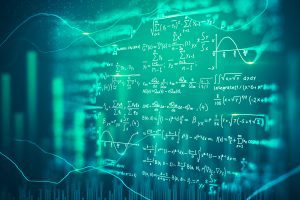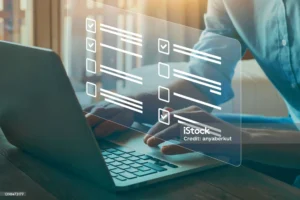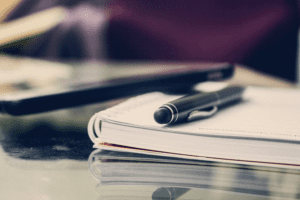Data collection the best method example

The data collection method example is very important. There are many ways to collect information in an investigation. The method chosen by the researcher depends on the research question being asked. Some data collection methods include surveys, interviews, tests, physiological evaluations, observations, review of existing records, and biological samples.
Survey
A survey is a series of questions directed to research participants. Surveys may be administered in person, by mail, telephone, or electronically (such as email or on the Internet). They can also be administered to an individual or a group. Surveys are used to obtain information about many people and may include multiple choice or open-ended questions (such as demographic information, health, knowledge, opinions, beliefs, attitudes or skills).
Interview
An interview is an interaction involving the researcher and a participant(s) in which questions are asked in person, by telephone, or even electronically (email or Internet). During an interview, questions are asked to obtain detailed information about the participant about the topic of study. The questions may be similar to those asked in a survey.
A test is a physical or mental form or task for which a normal standard has been determined, or for which the correct answers are known. A participant’s performance on a test is compared against these standards and/or correct answers.
Tests are used in research to determine the aptitude, ability, knowledge, physical or mental health status of the participant in comparison to the general population. Tests may be administered in person, in writing, or by electronic means. An example of this would be
- Students taking standardized academic performance tests (such as the SAT, MCAT, or GRE).

Physiological evaluations
Physiological assessments are measures in which a participant’s physical characteristics are recorded, such as blood pressure, heart rate, or physical strength. In health-related research, physiological assessment can be used to determine the health status of a participant before, during, or after taking part in a study. An example would be:
- Have seniors touch their toes to test their flexibility and reach.
Observations
Observations are records taken that do not require participation. These recordings are made while participants are engaged in routine behaviors and are used as an indicator of what participants do, rather than relying entirely on participants’ accounts of their own behavior. An example would be:
- A researcher observing the educational plans used in a classroom by a public school teacher.

Log Review
Records review occurs when a researcher examines and extracts information from documents that contain data about the participant. The records reviewed in an investigation may be public or private. Example of this is:
- A researcher collecting information about a condition from patients’ medical records.
Biological samples
Biological samples are substances (blood, urine, saliva) that are taken from a person and used to measure physiological information. An example would be
- Do a blood test to determine the sugar content in a diabetic patient.
Whatever type of information is collected for a study or however it is collected, it is extremely important to collect information with precision (reliability), accuracy (validity) and a minimum of errors. The integrity and usefulness of the research will be undermined (decreased) if the study measurements are not correct.
Data collection examples
Data collection is an important aspect of research. Let’s consider an example of a mobile manufacturer, company X, which is launching a new product variant.
To conduct research
- about features,
- price range,
- target market,
- competitor analysis,
- data has to be collected from appropriate sources.
The marketing team can conduct various data collection activities such as online surveys or focus groups.
The survey should have all the right questions about features and pricing, such as
1.“What are the top 3 features expected from an upcoming product?”
2.“How much are your likely to spend on this product?”
3.“Which competitors provide similar products?”
For conducting a focus group, the marketing team should decide the participants and the mediator. The topic of discussion and objective behind conducting a focus group should be clarified beforehand to conduct a conclusive discussion.
Data collection methods are chosen depending on the available resources. For example, conducting questionnaires and surveys would require the least resources, while focus groups require moderately high resources.
Reasons to conduct online research and data collection
Feedback is a vital part of any organization’s growth. Whether you conduct regular focus groups to elicit information from key players or, your account manager calls up all your marquee accounts to find out how things are going – essentially they are all processes to find out from your customers’ eyes – How are we doing? What can we do better?
Online surveys are just another medium to collect feedback from your customers, employees and anyone your business interacts with. With the advent of Do-It-Yourself tools for online surveys, data collection on the internet has become really easy, cheap and effective.
Conducting customer surveys for data collection to multiply sales
It is a well-established marketing fact that acquiring a new customer is 10 times more difficult and expensive than retaining an existing one. This is one of the fundamental driving forces behind the extensive adoption and interest in CRM and related customer retention tactics.
In a research study conducted by Rice University Professor Dr. Paul Dholakia and Dr. Vicki Morwitz, published in Harvard Business Review, the experiment inferred that the simple fact of asking customers how an organization was performing by itself to deliver results proved to be an effective customer retention strategy.
In the research study, conducted over the course of a year, one set of customers were sent out a satisfaction and opinion survey and the other set was not surveyed. In the next one year, the group that took the survey saw twice the number of people continuing and renewing their loyalty towards the organization data.
Analysis and data collection for algorithms
An algorithm is a set of highly complex instructions that works at very accelerated speeds. And this is why detecting a modification in the data entered into the system is very difficult.

Algorithms based on deep learning ( deep learning ) work by recognizing enormous amounts of data that are labeled in different categories. But this data is very sensitive to small nuances. Any introduction of information by any external agent could corrupt the results. Among these algorithms are those for image recognition. To distinguish and label the people and objects that appear in the photos and thus be able to offer those images.
How to choose the right data collection technique?
To choose the most appropriate data collection techniques we recommend:
- Consider the research objective : What methods seem most appropriate for the objective of your research and the questions you want to answer?
- Consider stakeholders: Use a technique that allows you to gather information that can be analyzed and presented in a way that stakeholders find credible.
Think about the study participants from whom you will collect data:
- Where and how can participants best be reached?
- What is the culturally and linguistically appropriate method?
- Is conducting a face-to-face interview or survey more appropriate for certain target populations?
- Does the data already exist in data systems of public programs or institutions?
Consider the resources available:
- Consider what techniques you can afford to perform in a timely manner.
- Consider when results are needed,
- your own capabilities, the costs of hiring external staff
- other resource-related issues.
Consider the advantages and disadvantages of each technique:
- What are the main strengths and weaknesses of each one?
- Evaluate aspects such as time and burden on the participant,
- The cost, the necessary infrastructure and access to records.
- What is most appropriate for your research needs?
How to effectively use data collection techniques?
Once you have chosen the ideal data collection technique for your study, you must take into account the following aspects to ensure its correct use:
1.- Evaluate the data you need to collect
It is too easy to get information about anything, but it is essential to collect only the information we need. To do this, it is useful to ask yourself these 3 questions:
2.- Plan the appropriate data collection technique
To select the right data collection techniques, you must consider the type of information you want to collect, the time frame in which you will obtain it, and the other key aspects of the research that you have determined. Consider the time and difficulty involved in collecting each piece of data when deciding which technique to use.
3.- Take into account the identifiers
Identifiers, or details that describe the context and source of a survey response, are as crucial as information about the topic or program we are researching. In general, adding more identifiers will allow us to more accurately determine the successes and failures of our program, but the key is moderation.
4.- Place each type of data in a specific field
It is possible to mix data types in data entry fields. Both the code and the comment can be informative, but must be placed in separate data entry fields (with data validation where appropriate).
5.- Use data validation
When using text box fields, use validation types and set minimum and/or maximum values where possible to improve data accuracy. In particular, always use data validation for the known formats of a field; For example, the date and email addresses must be validated when entering data.


